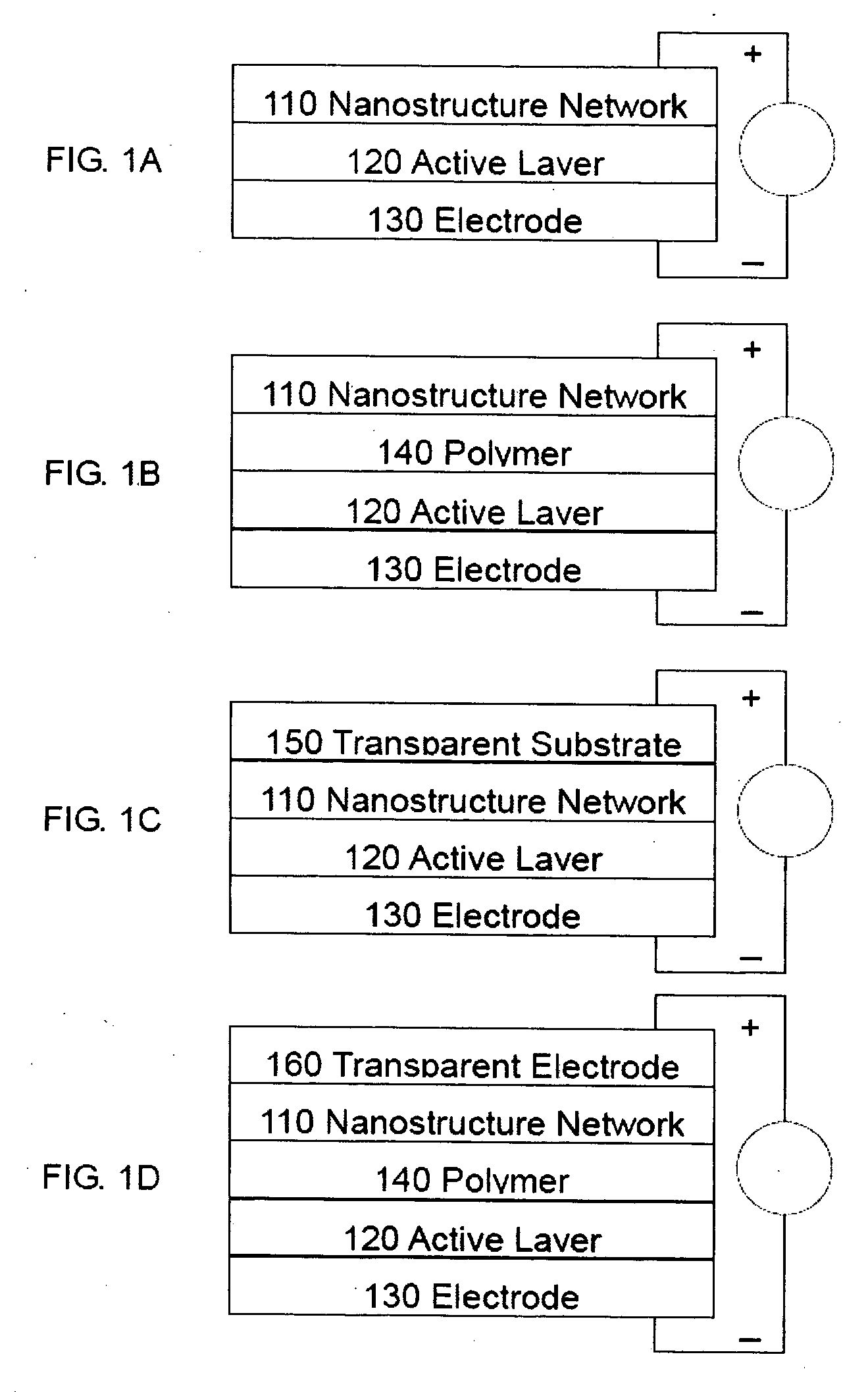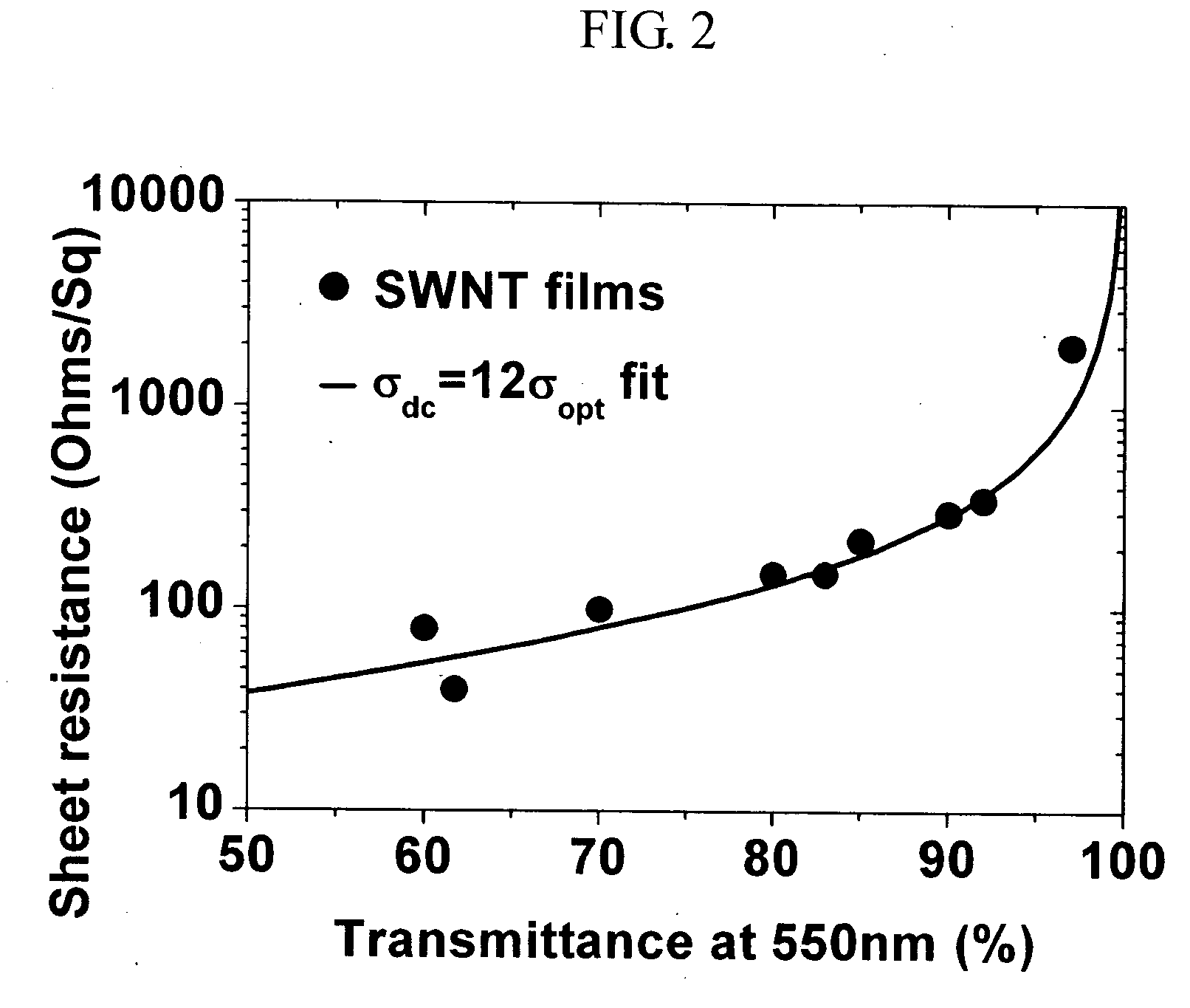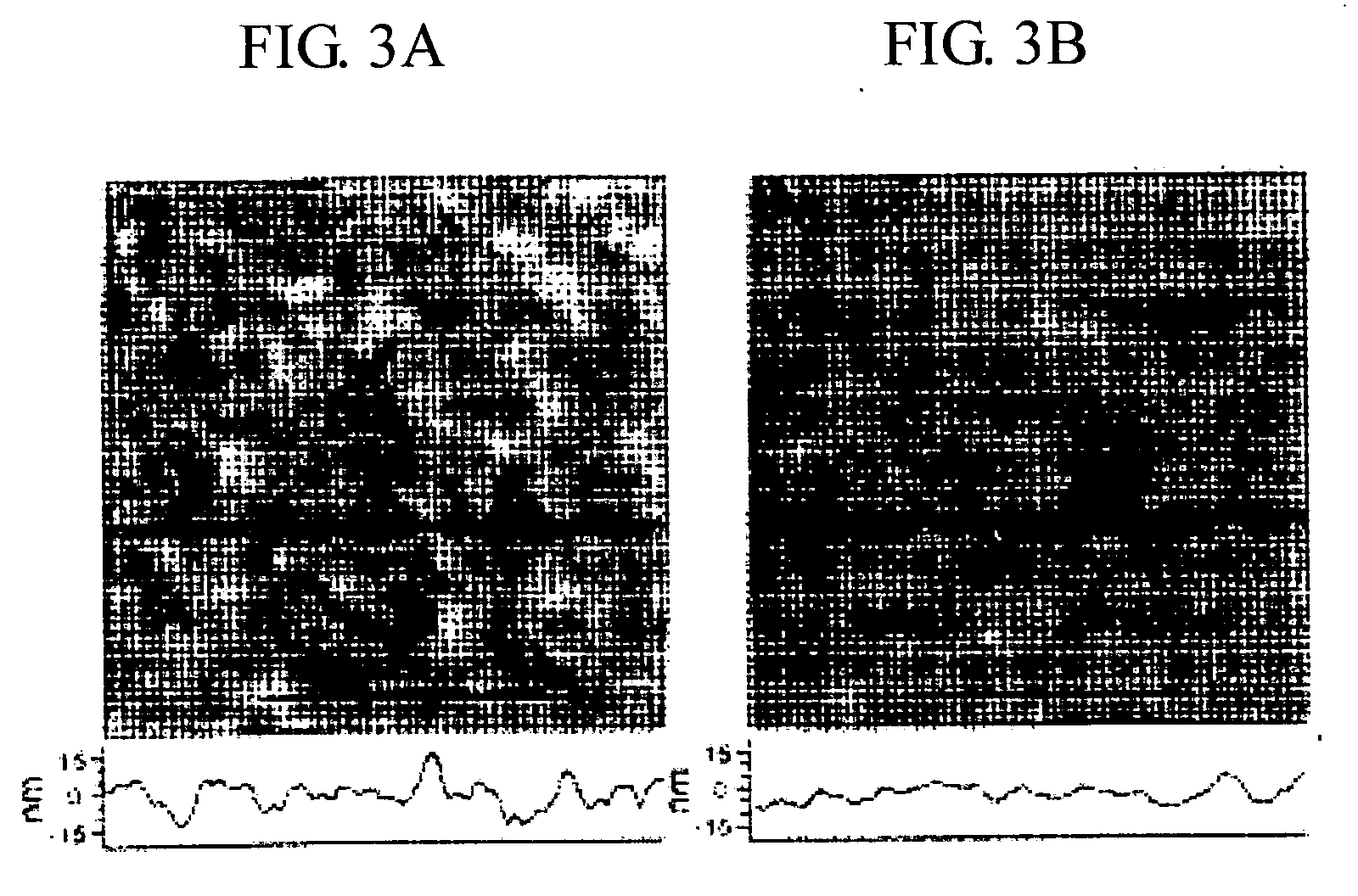Solar cell with nanostructure electrode
a nano-structure electrode and solar cell technology, applied in the field of solar cells, can solve the problems of affecting the underlying active layer(s), increasing the cost of c-, and rapidly becoming a scarce commodity
- Summary
- Abstract
- Description
- Claims
- Application Information
AI Technical Summary
Benefits of technology
Problems solved by technology
Method used
Image
Examples
Embodiment Construction
[0025] Referring to FIG. 1A, an optoelectronic device according to an embodiment of the present invention comprises a nanostructure network 110, an active layer 120 and an electrode 130. This device may be a solar cell, which is a semiconductor device that converts photons from the sun (solar light) into electricity. Fundamentally, the device needs to photo-generate charge carriers (e.g., electrons and holes) in an active layer, and separate the charge carriers to a conductive electrode that will transmit the electricity.
[0026] The active layer 120 is preferably a strong light absorber such as, for example, one based on silicon (e.g., amorphous, protocrystalline, nanocrystalline), cadmium telluride (CdTe), copper indium gallium selenide (CIGS), chalcogenide films of copper indium selenide (CIS), gallium arsenide (GaAs), light absorbing dyes, quantum dots, organic semiconductors (e.g., polymers and small-molecule compounds like polyphenylene vinylene, copper phthalocyanine and carbo...
PUM
| Property | Measurement | Unit |
|---|---|---|
| sheet resistance | aaaaa | aaaaa |
| sheet resistance | aaaaa | aaaaa |
| sheet resistance | aaaaa | aaaaa |
Abstract
Description
Claims
Application Information
 Login to View More
Login to View More - R&D
- Intellectual Property
- Life Sciences
- Materials
- Tech Scout
- Unparalleled Data Quality
- Higher Quality Content
- 60% Fewer Hallucinations
Browse by: Latest US Patents, China's latest patents, Technical Efficacy Thesaurus, Application Domain, Technology Topic, Popular Technical Reports.
© 2025 PatSnap. All rights reserved.Legal|Privacy policy|Modern Slavery Act Transparency Statement|Sitemap|About US| Contact US: help@patsnap.com



